The Children Of Crow Tribe
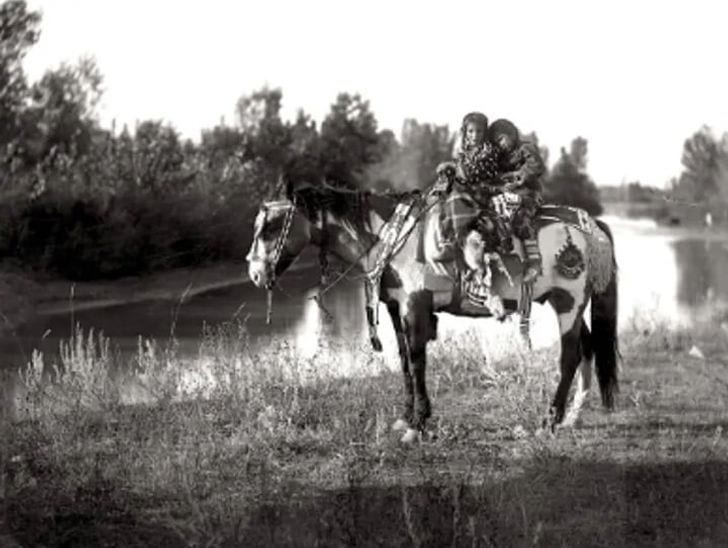
The children captured in this photograph belong to the indigenous Crow Tribe. Notice how they have a stronghold on the horse even though they are so young. It is because the children from these tribes were trained to ride horses from an early age. The courtesy for capturing this brilliant photograph goes to Richard Throssel. He clicked this photograph back in the early 1900s. The people from this tribe used to take shelter at the Yellowstone River valley. Their number has significantly reduced due to various reasons, and today they live in Billings, Montana. They lead quite an active life, as evident in the picture.
A Native Couple Pose For The Photograph
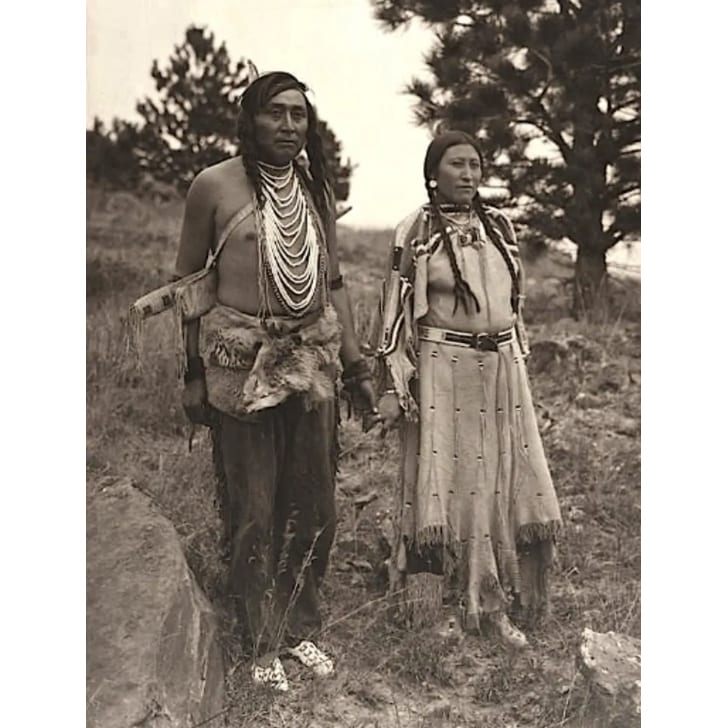
A unique couple photograph from the 1900s that will undoubtedly make you smile. The couple stands side by side while holding hands and are dressed in traditional attire. You will rarely see a photograph like this, and we owe a big thanks to Joseph K. Dixon for clicking the picture. It is a fabulous picture and shows the companionship and understanding existing between the couple. Many people will be amazed to see this pair. This photo is undoubtedly a treat for the eyes and will make you wonder how people lived in the past. They are not afraid to show their love and do not shy away from the camera.
Two Girls From Hopi Village
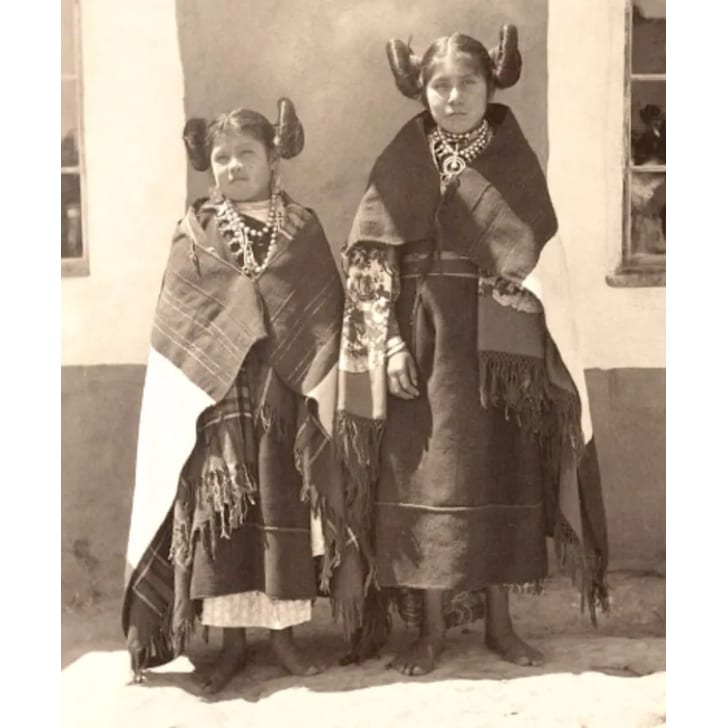
Two young girls from the Hopi village situated in Walpi, Arizona, pose for a photograph. The origin of this tribe dates back to 900 AD, and they have a long history. Walpi is supposed to be one of the most primitive villages where the property is passed down to children through mothers. It is an exciting and unique practice. Their attires are unusual, and as seen in the photograph, the two girls are wearing exquisite clothes. The name of these two girls is Popomana and Yalatza. Sadly, the number of these villages' inhabitants are decreasing as their village lacks necessary facilities like electricity and water.
The Arrival Of Settlers
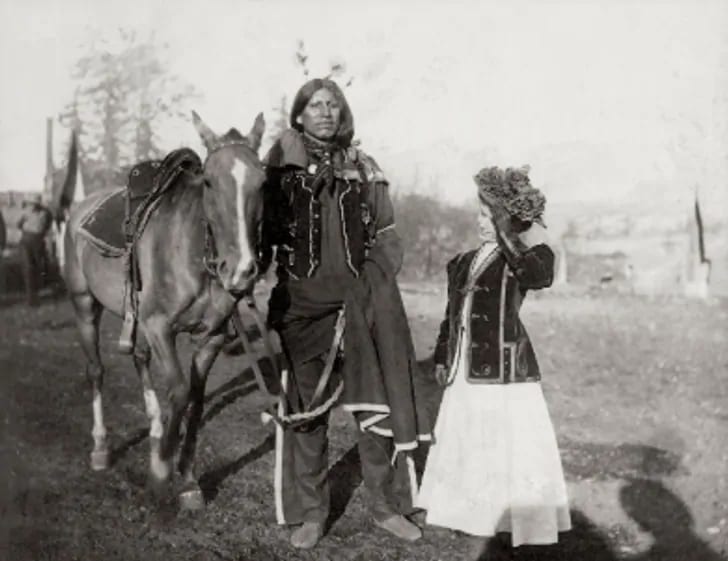
As time went by, settlers arrived in these distant lands and began to impart their teachings to these indigenous people. Somehow, they had this notion that they were superior to these native tribes and deemed them backward. So they took it upon themselves to teach them how to be civil. As seen in the picture, a man belonging to a native tribe is not dressed in his tribe’s clothes and even seems uncomfortable. Beside him are a horse and a lady dressed in modern attire. In a bid to teach them the modern way of life, the settlers began to take over their cultural practices.
Stopping By For A Drink
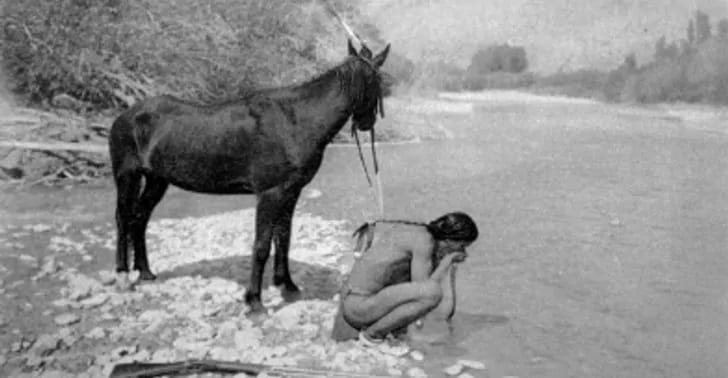
The person in the picture is an Apache fighter. The photograph dates back to the 1900s, and the location is that of Navaho Rio in Arizona. It is hard to believe, isn’t it? Today you will not be able to find such a peaceful landscape anywhere near that place. And you would think a million times before stopping by to drink straight from the river. Thanks to pollution, you will undoubtedly fall sick. This rare photograph shows that these native tribes led a simple life and did not rely on technologies to meet their basic needs. Indeed, it would have been great to live in such a time.
The Fear Of Change
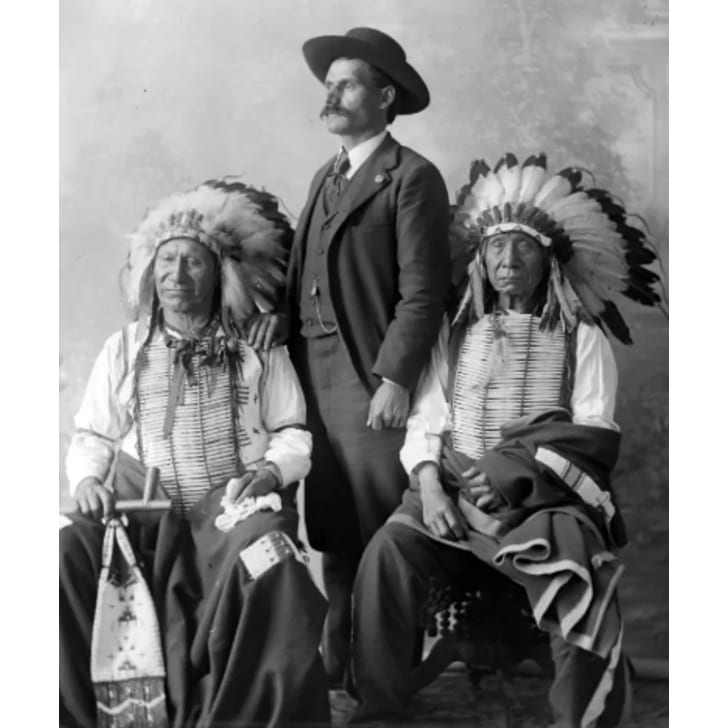
The two men seated are the chiefs of American Horse and Red Cloud. They are dressed uniquely and are from Dakota. Standing in the middle is the military scout Frank North, a member of Buffalo Bill's Wild West Show. The photograph was clicked back in the 1900s, and from the chiefs' expression, one can assume that they are quite unhappy about something. They indeed are not happy because they knew how powerful America was and feared that they would destroy their tribes. There was a palpable sense of fear that soon everything was going to change, and not in their favor. They had every reason to remain alert.
The Great Blanket Weavers Of Navajo Tribe
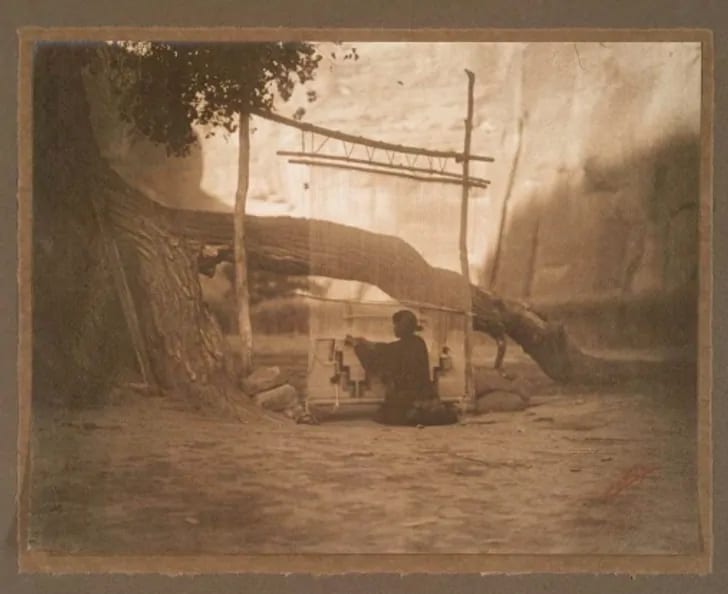
Edward Curtis took this breathtakingly beautiful photograph. He took it upon himself to record how indigenous people went about their lives. In this picture, a Navajo blanket weaver is weaving a blanket. You should know that their blankets and sashes are still quite famous and are considered to be highly valuable. After taking these pictures, Curtis had talked about how these people prepared the blankets. He talked about their value and how the Navajo tribesmen placed their looms inside during winters and outside when it was a warm season. It seems like Curtis took the picture during summers as the loom is under the shade of a tree.
The Practice Of Storytelling
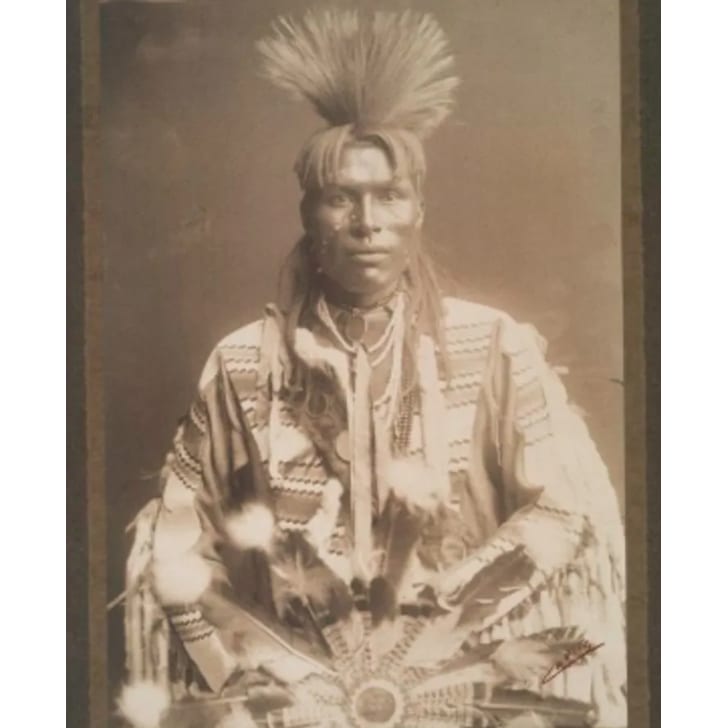
This extravagantly dressed gentleman is the son of a Double Runner. The picture was clicked in Blackfoot, Montana by Edward Curtis. A Double Runner was the storyteller of Blackfoot. They would narrate stories about their tribes and pass down this information to the younger people of the tribe. In this manner, they would preserve the secrets of inherent practices of their tribe to preserve their history. Most of these pictures are clicked by Curtis, who spent three decades documenting these indigenous people. He would write small notes on the back of these photographs. Most of his pictures are on display in The New York Public Library.
Snake Priests Of Hopi Tribe
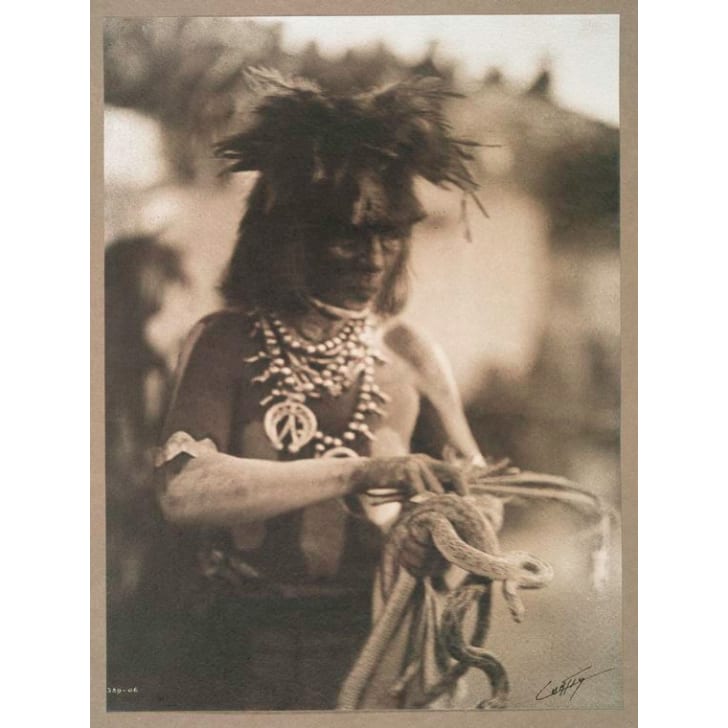
Most of the information about these native tribes came from the information written about them on these photo prints' back. However, Edward Curtis did not write much about this photograph except for "a Hopi Snake Priest." It is difficult to ascertain what these snake priests did. The Hopi Tribe is famous for holding sacred ceremonies in which they would incorporate snakes as well. This tribespeople would wrap snakes around their necks. Apart from this, they would even put them in their mouth. Shocking yet true. Many people believe that snakes had a part to play in the rainfall in the desert area. These ceremonies were held in August each year.
The Blackfoot Medicine Lodge Encampment
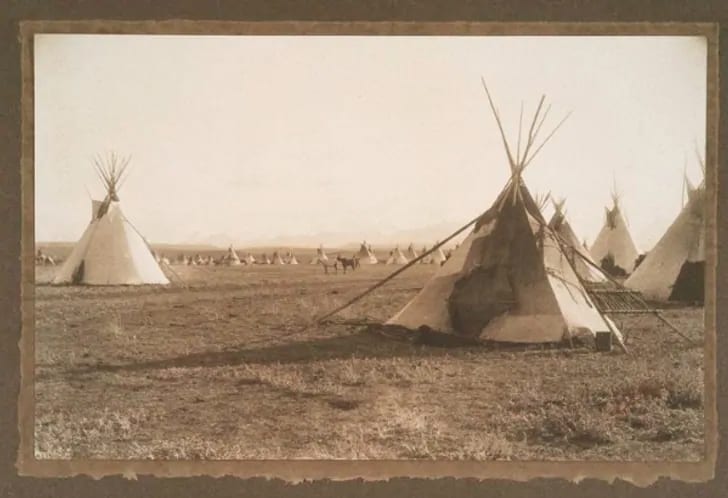
The indigenous tribes adopted a simple way of living that did not require any sophisticated technology. When anyone from the tribe would fall sick, they would use natural things and hold ceremonies to treat the sick. However, with the influx of the settlers, these activities were deemed out of place. It is a Blackfoot Medicine Lodge Encampment that was clicked in 1899. A unique gathering and a rare sight which we won’t get a chance to see again. These practices were discouraged by the settlers, who said that they had a negative impact. But this picture captures how the ingenious people lived in humble lodges.
Fetching Water On Foot
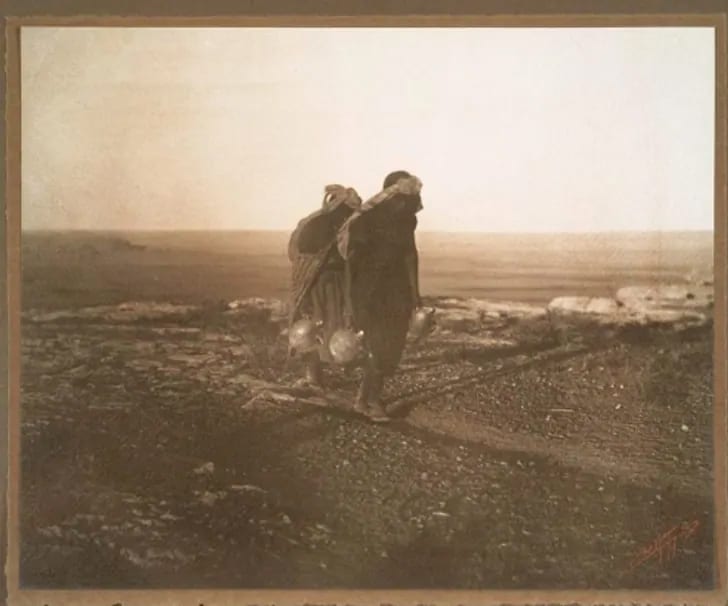
There was a time when people had to walk for miles to fetch water. Today, we get fresh water directly in our homes, and we do not realize how privileged we are. In the Hopi villages, people were assigned the task of obtaining water from the lakes. This picture shows two women walking on foot in the early hours to get fresh water. Carrying water on one's shoulder indeed must have been a daunting task. Even though we have advanced technology nowadays, there are still some remote corners where people have to walk a long way to fetch water. There is still a need for development.
A Young Navajo Boy
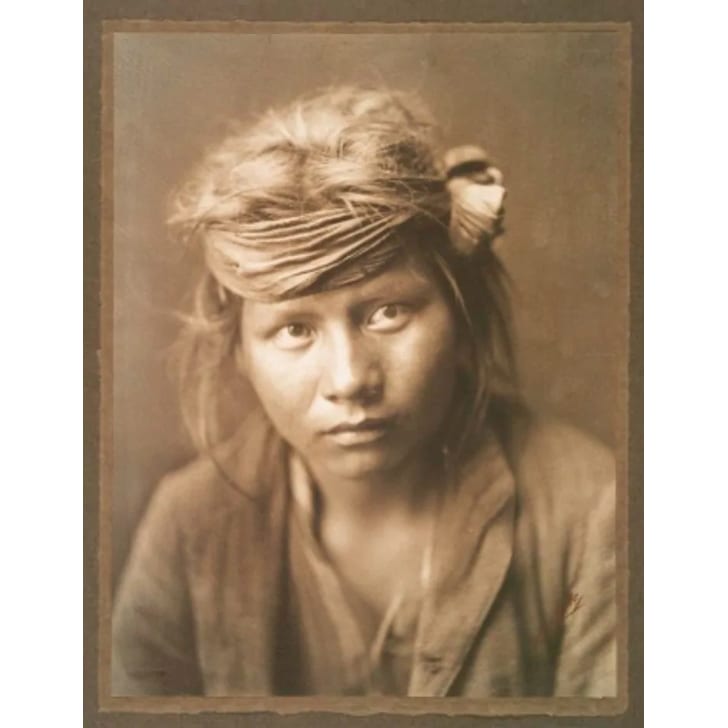
The ingenious people of the Southwestern United States are called the Navajos. Famous for weaving blankets and rugs, they learned how to weave cotton from the Pueblo people. They later began to weave wool because they started rearing sheep—this is a portrait of a young Navajo boy wearing traditional attire. In addition to this, their tribal name is “Dine,” which, in a literal sense, means “the people” in ancient Athapascan language. Interestingly, this language is still in use to this date. Even after so many advancements, some remnants of the old languages remain intact. It becomes vital that we do our bit in preserving these distinctive cultures.
Apache Baby Carrier
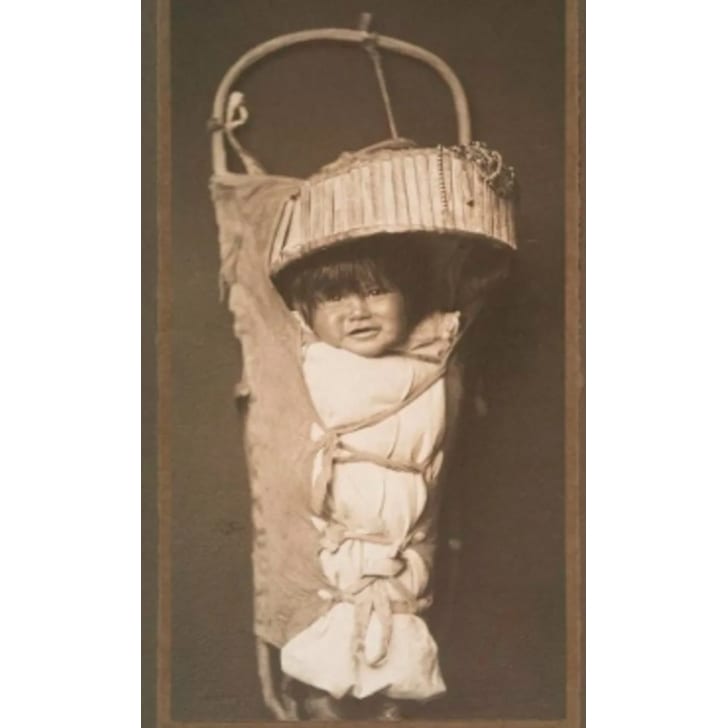
People are protective of their children, and they would do anything to ensure their safety. It is also valid for people belonging to ancient times. In this picture, there is a young Apache baby, placed in some carrier. There is no particular name for this object, but it sure looks nice and warm. Whenever the tribespeople had to go somewhere, they would take their kids along in these strange objects. It was a safe way to travel with a child. Babies are so adorable, and the same is true for this kid in the picture as well. No matter which era, parents' prime concern is their children's well being.
Navajo Medicine Man
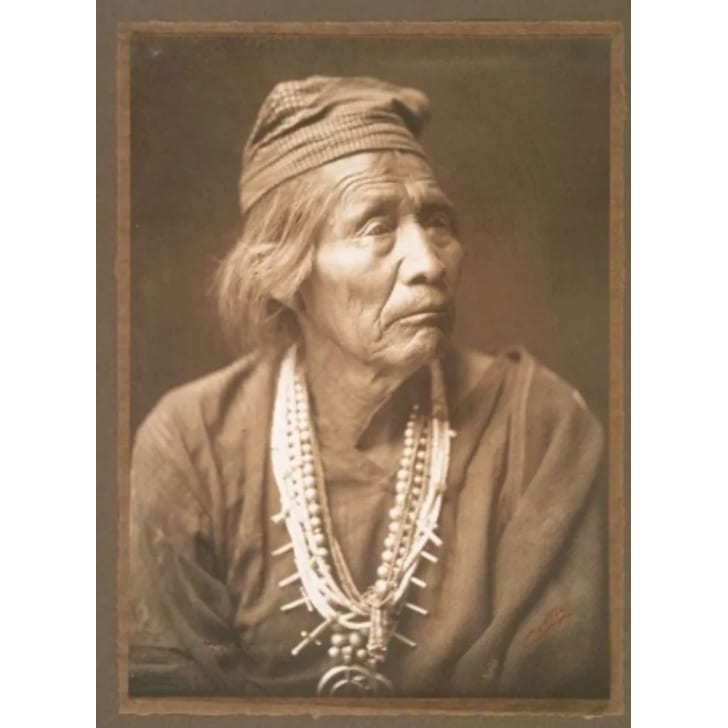
Another great photograph by Curtis is of Navajo Medicine Man, who was also known a the Wind Doctor. Whenever someone from the tribe would fall ill, they would take the patient to this person. Interestingly, the Wind Doctor would try to heal the patient by singing or chanting, and there was no use of medicine. These unique ceremonies did not have a specific time limit, and some may even vary up to nine days and nights. Many people took great interest in studying these rituals, and this includes Washington Mathews, who referred to them as the mountain chant and the night chant.
Beautiful Landscapes
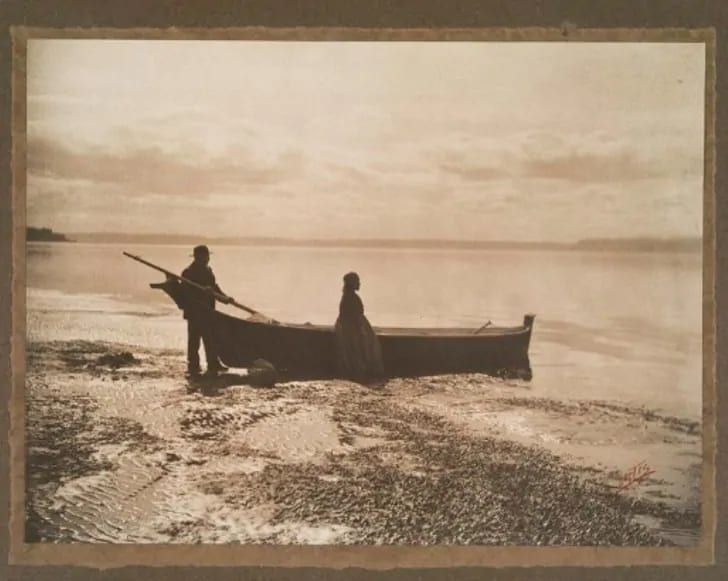
In the early 1900s, there was no sign of industries, and there was no pollution. If you went for a walk, you would not come across a huge crowd and could enjoy the picturesque landscape all by yourself. The only sound reaching your ears was from nature. To travel somewhere, people would get on their canoes and paddle to the desired destination. Unfortunately, this is not the case anymore as everything is now polluted. This breathtaking picture is an example of how people enjoyed breathtaking views. In these canoes, people would travel from Columbia to Yakutat Bay, Alaska, while enjoying the view.
Traveling On Horseback
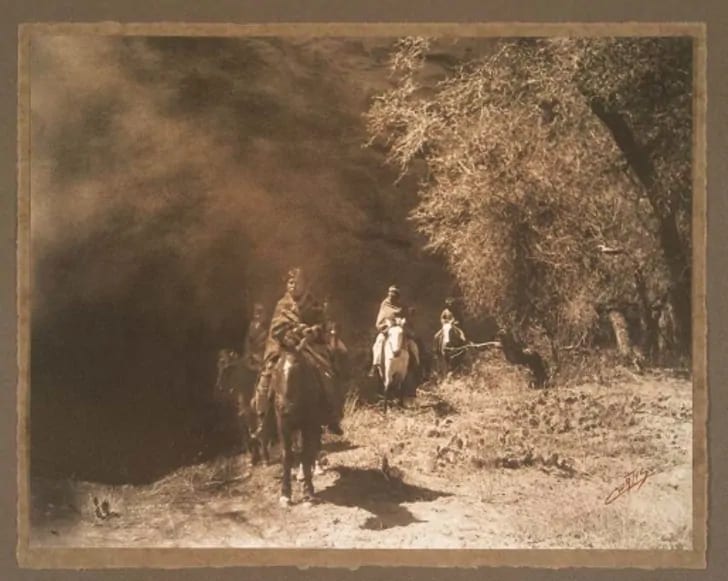
For moving from one place to another, tribespeople would either travel on foot or a canoe or horseback. These were their primary means of transportation. When the settlers came to their lands, they deemed this practice backward and took it upon themselves to teach these indigenous people the modern practices. In this photograph, we can see Navajo Indians coming out of dark woods in Arizona. The settlers tried to teach their practices to these indigenous people, which, according to them, was the civil way of leading life. But these outsiders did not realize that the native people had their own set of values, which was their kind of civilization.
Being Close To Nature
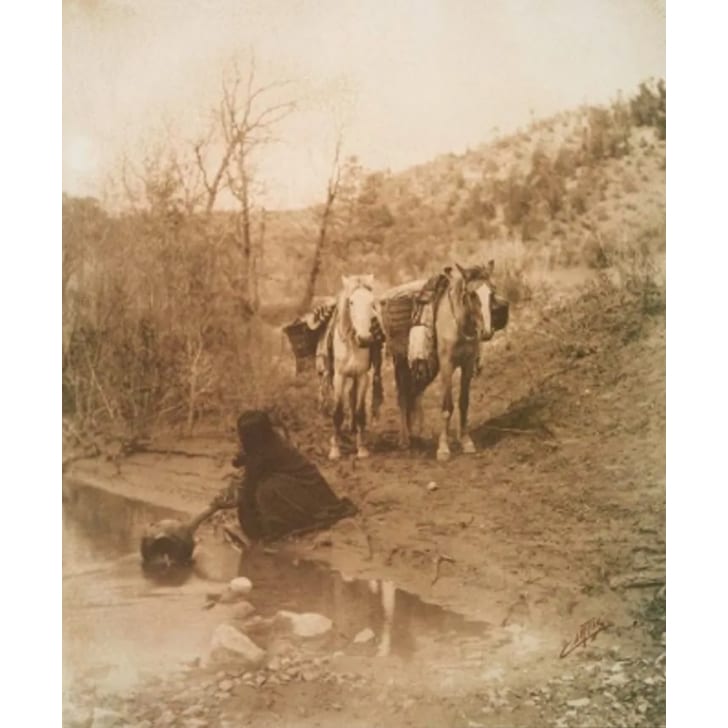
When the beautiful landscapes were yet to be polluted by big industries, being close to nature did not seem like a distant dream. Today, if anyone wishes to move away from city life's hustle-bustle, they either go camping or visit a mountain region. But the tribespeople did not have to do any of these things. They led a relatively simple life. Here in this picture, an Apache woman is drawing water from the river. Due to water scarcity in the desert regions, these people knew the value of water and other resources. This tribe inhabited the Southern Great Plains, which includes Arizona, New Mexico, Texas, and Oklahoma.
New Methods Of Transportation

It is incredible how things change with time. As time went by, the means of transportation of the tribe people changed as well. As humans became more advanced, they invented new methods of traveling to different places. And this is what Curtis is trying to tell us through this picture. It is a Blackfoot picture in which native people can be seen riding horses in the grasslands of Montants. Once they started using horses as transport methods, certain Northern plains tribespeople carried their camp equipment like shown in the picture. By the early 1900s, this method of transportation had come to an end.
A Hopi Woman
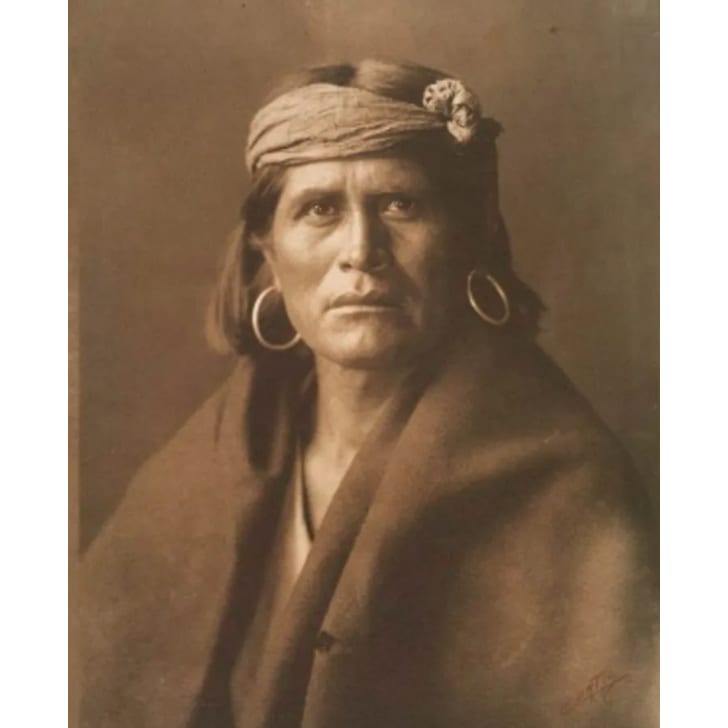
The history of the Hopi tribe goes back a thousand years. They are mostly agricultural people, even though the Hopi lands have significantly reduced now. They are famous for their rituals and ceremonies. These include the wedding, birth, death, and snake rituals. It is one of the most traditional Indian societies. In the photograph is a Hopi woman dressed in conventional clothes. The photograph is captured by Curtis, who spent most of his life documenting the life of native Americans. Hopi tribe had several spiritual beliefs such as they believed the dead peoples’ spirits become a part of nature. Therefore, for them, these elements are vital for healing and protection.
The Famous Hopi Hairstyle
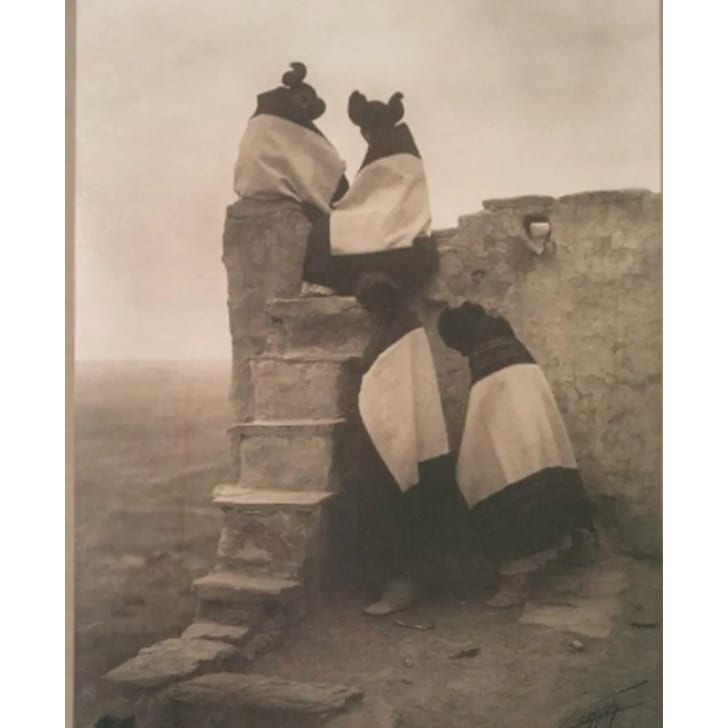
The unmarried Hopi women wore a specific kind of hairstyle by wrapping the hair around wooden discs. In this manner, a woman could tell people that she is not married to anyone. This hairstyle must have helped a lot of prospective grooms in choosing a bride for themself. Here in the photograph, four Hopi women are sitting atop their house, looking into the distance. Additionally, these women would wear this hairstyle to celebrate the start of the winter solstice. It was a powerful symbol, and modern fashion continues to recreate this look, using innovative methods. From this, we come to understand that the Hopi tribe had a very sophisticated culture.
Sioux Tribesmen
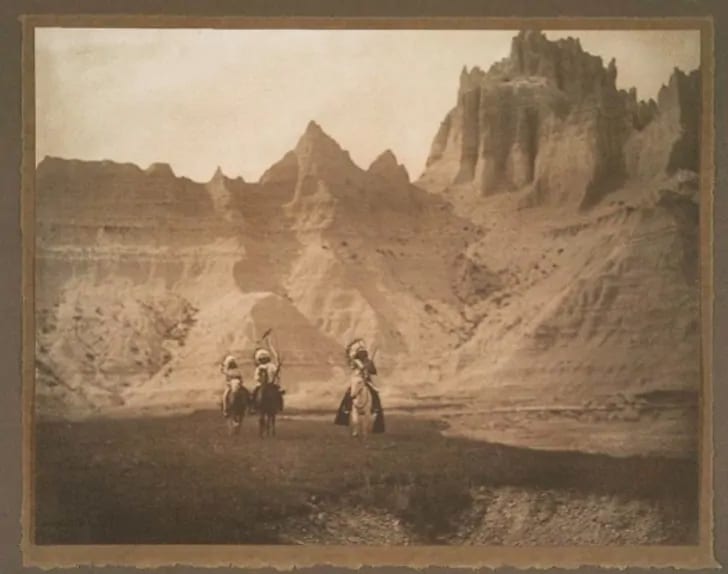
When we talk about different tribes, we attach several practices to identify their unique culture. For instance, the Hopi tribe is associated with agriculture, while the Navajo tribe is known for weaving blankets. In this photograph, Curtis has captured three men belonging to the Sioux tribe. These people were known for hunting and being warriors. They would travel the Great Plains in search of bison. This beautiful shot is of three Sioux men hunting in the Badlands of South Dakota. A great picture indeed! The people from this tribe have now scattered across different parts of Canada and the United States of America.
The Famous Leader Red Cloud

Red Cloud was one of the most influential leaders of the Oglala Lakota tribe. He was considered a prominent opponent by the United States Army, who was all set to occupy the western frontier. Red Cloud is also famous for signing the Treaty of Fort Laramie, which was instrumental in the transition of freedom in the plains to reservation life. Many people looked up to him and were mesmerized by the power he held. Even after he was forced into the reservation, Red Cloud did not give up on his people and continued fighting for them. At the time of his death, many people remembered him for his greatness.
The Apache Warrior
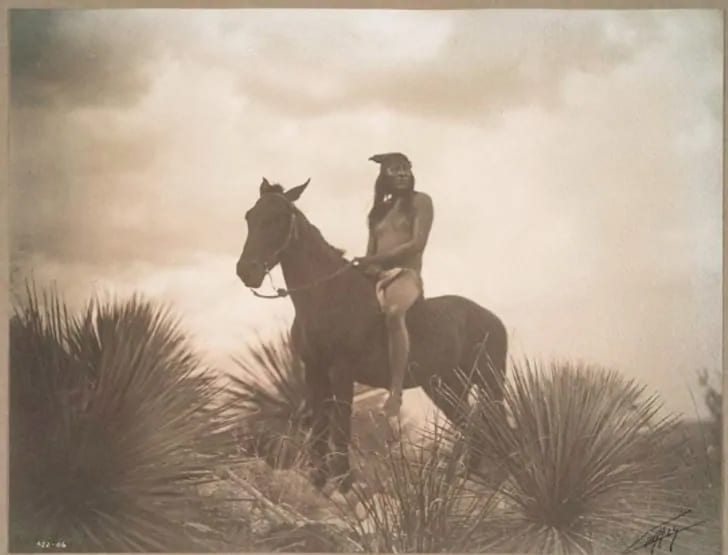
Though each tribe has its distinct features, they also share certain similarities. For instance, people belonging to the Sioux tribe are good at hunting and hone a warrior culture. Despite this, Apache people were also known to be aggressive and mighty warriors. In this picture, an Apache man is atop a horse, posing for the picture in a secluded landscape. It shows that the different factions share some similar traits. They were brave and had good hunting skills, maybe because it was essential to survive in those days. Curtis has managed to click a beautiful shot with a great backdrop.
The War Chief American Horse
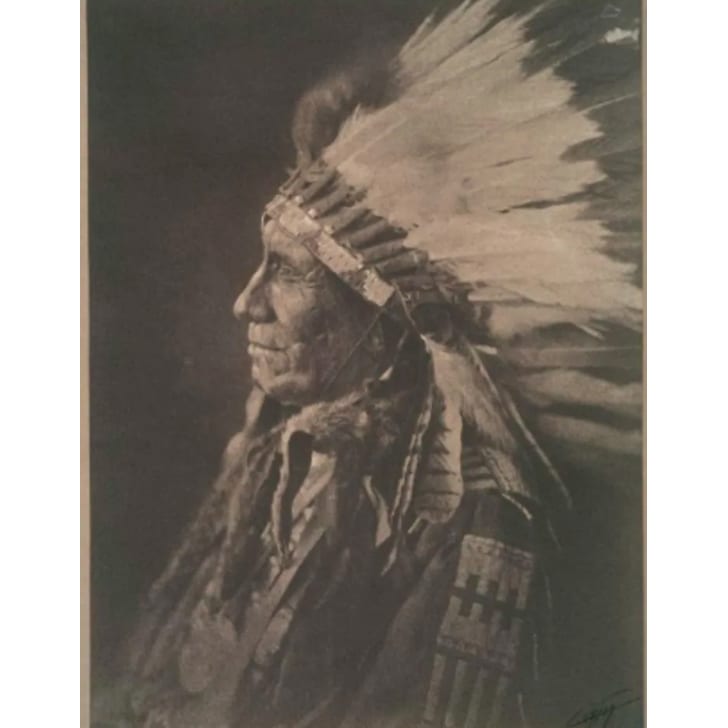
The photographer of this portrait, Edward Curtis, wrote a simple description on the back of this picture “A Sioux Man.” However, this is no ordinary person. He is the American Horse who was an Oglala Lakota chief. Additionally, he was a celebrated historian and educator. He is famous for playing a crucial role in creating a good relationship between the tribespeople and the white men. His contribution to American history while working as a U.S. Army Indian Scout shows that he was a good leader. He was aware of the importance of education and made sure that his people benefitted from it. He was also a principal war chief.
Sioux Chief In The Badlands
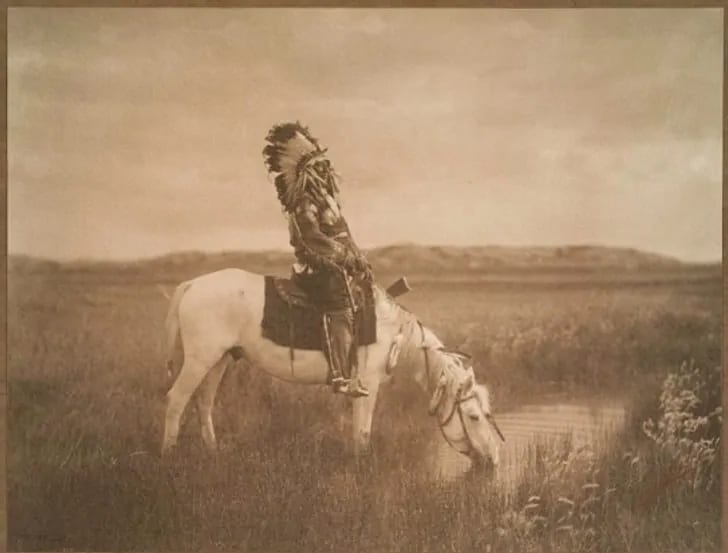
We have established that the Sioux tribespeople was principally known for hunting and were frequently on the move. Many photographs taken by Curtis reveal that they would thoroughly search the Great Plains in the hopes to spot a bison. The Chiefs of the tribe were influential people who were considered wise and had the authority to make decisions. One such Chief was Sitting Bull. However, on the back of the picture, it is not mentioned who this Chief is, and it most probably is not Sitting Bull. Here in the picture, the Chief’s horse is stopping by an oasis to drink water. The location is in the badlands of Dakota.
Traveling Through Canoe
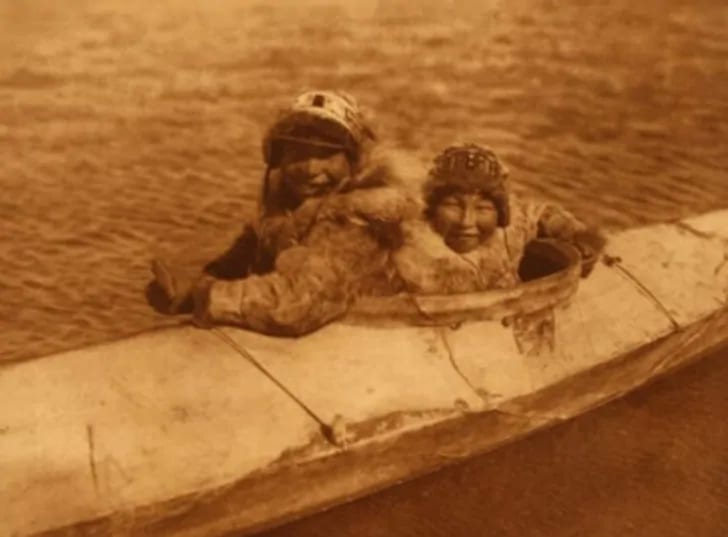
The tribespeople used a canoe to travel in the water, which appeared to be a convenient option for them. This photograph clicked by Edward Curtis shows two people of the Nunivak Island sitting inside a canoe. The photograph was taken back in 1927. Curtis did a fabulous job in documenting the life of these native Indian Americans. Through his pictures, many scholars were able to understand the culture of these diverse tribes. People have not stopped using the canoe, and it has undergone many upgrades since then. It must have been a great experience to travel through the clean waters while enjoying good scenery in that era.
The Mohave Tribe
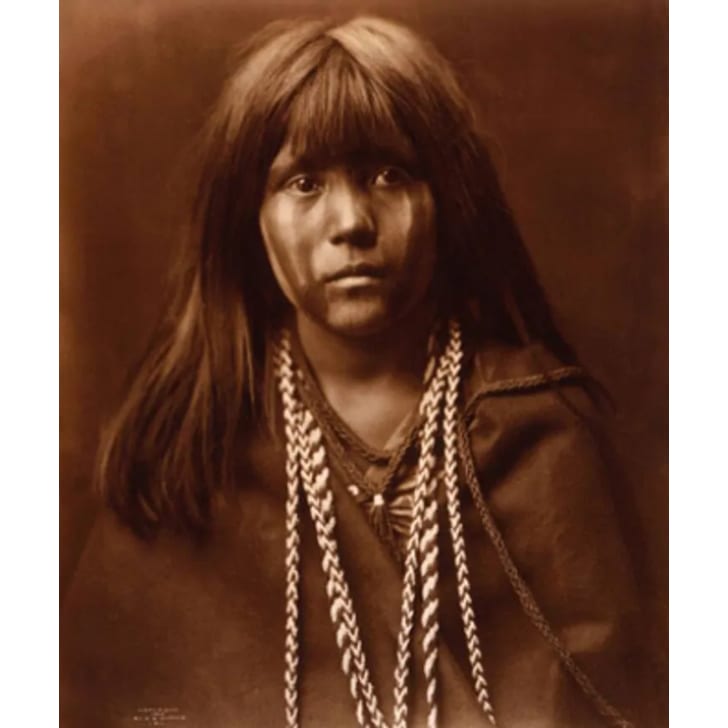
Another Native American tribe is the Mohave people, who first began to settle near the Colorado River in the Mojave desert. They are entitled to a marked territory that lies within the borders of Nevada, California, and Arizona. Due to the closeness of water, farming becomes relatively easy. This tribe is also famous for being efficient hunters and anglers. They have unique cultural practices that set them apart from other tribes. The Mohave tribesmen refer to themselves as Hamakhav, which literally means, “People living along the water.” It is because of their close affinity with the river. Here is a photograph of a young Mohave girl dressed in traditional attire.
Canoeing In Harsh Winters
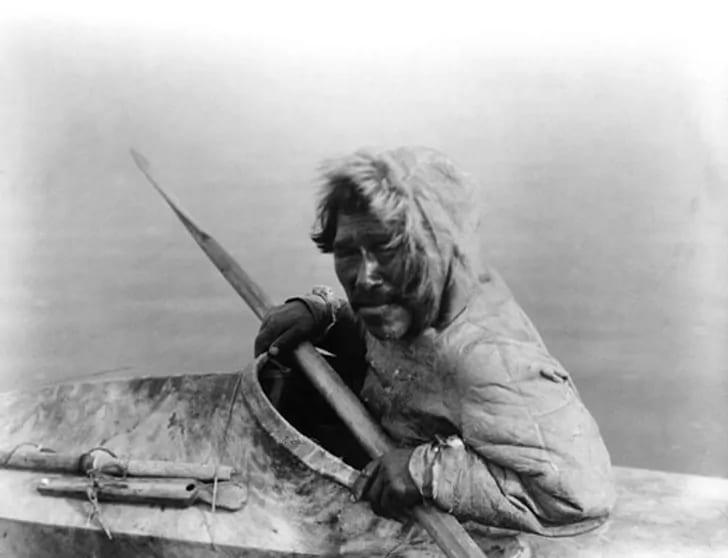
The native people that settled near the rivers heavily relied on fishing to meet their daily requirements. So, they used canoes to travel in the water throughout the year. While it must have been an enjoyable task to travel in the warm seasons, it was equally hard to do the same in the harsh winters. In the picture, a man is sitting inside a canoe. He does not appear happy about going out in the water because of the extreme cold. Life was full of challenges for these indigenous people, but they would overcome them because it was all about survival. Talk about living in the wild!
Together And Happy
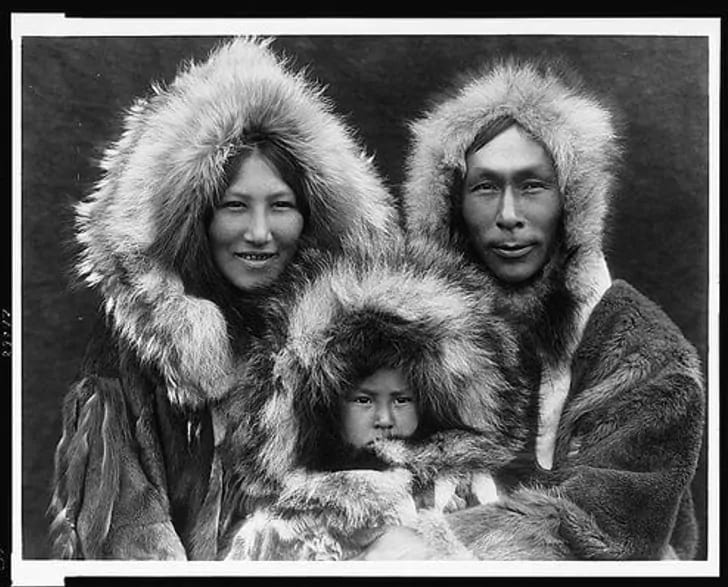
Here is a beautiful family portrait of the indigenous people who look so happy in the picture. Notice the furry warm clothes? Back then, people used to drape themselves in thick animal skin and fur to protect against the harsh winter cold. Nowadays, we see furs have become quite trendy. Well, for these simple people, it was just a way to stay warm. Without the influx of any technology, life was a simple affair for these tribes’ people. Unlike today, they would derive pleasure from the bounties of nature. This family does look happy and content. We might have advanced, but at the cost of what? Our contentment!
A Strange Navajo Mask
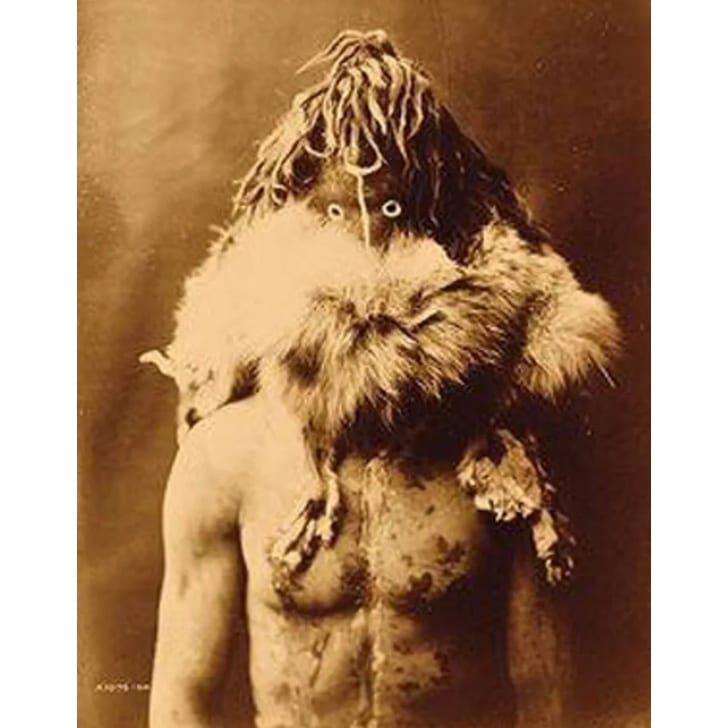
Each tribe had a unique cultural identity, and their traits were distinct as well. Edward Curtis spent a lot of time with these native people to understand their way of living, and he managed to click some great photos. Here is a portrait of a Navajo man wearing a leather mask and a collar made of fur. He looks quite scary and out of place. However, this tribe believed in peace and went about their day weaving rugs or blankets. Their blankets and rugs are still famous today. Known for being a harmless tribe, they believed in living in harmony with nature and all its elements.
The Intense Look
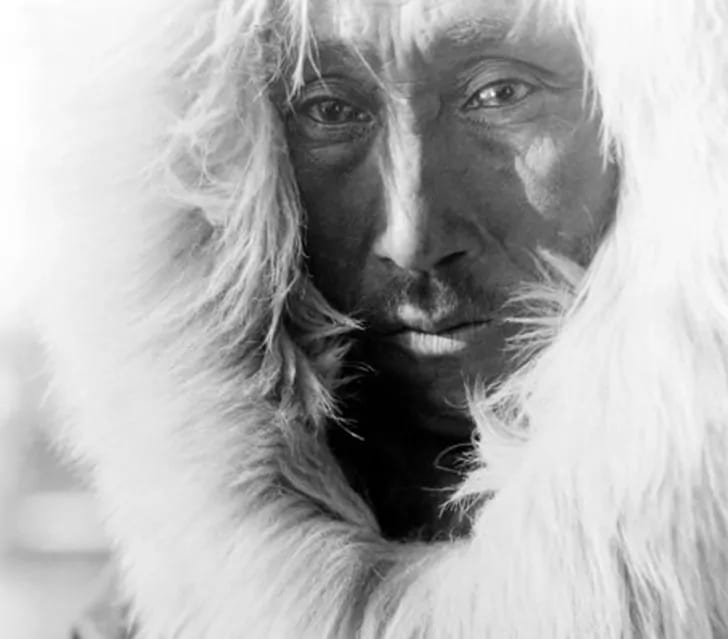
This photograph is a close-up shot of a tribesman taken in Alaska in the year 1929. The one thing that attracts our attention is the look in his eyes. You can tell a lot about a person by staring into their eyes. In addition to this, the man is wearing thick fur around his head. This shows that these indigenous people had to survive in some of the harshest climate conditions, and they would do so by covering themselves in animal skin and fur. It would have been a very tough task to manage without any external heating sources. But these people are known for their strength and toughness.
Usage Of Traditional Masks
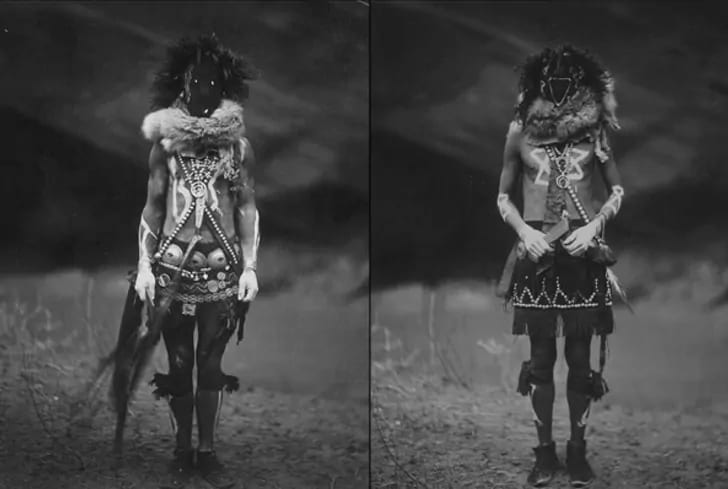
You might be wondering why these men are wearing strange masks that appear scary. However, they used these masks to look like a deity. Remember that certain indigenous tribes believed in conducting sacred ceremonies and rituals to strike a balance in their lives. The person on the left is wearing a ritualistic costume to look like Nayenezgani, a famous Navajo deity. In comparison, the person on the right is dressed as Tobadzischini, the Yebichai, the war god. The mask's material is that of buckskin, which is considered sacred by these tribes' people. For breathing and seeing, they would carve small holes in the mask.
The Majestic Thunderbird
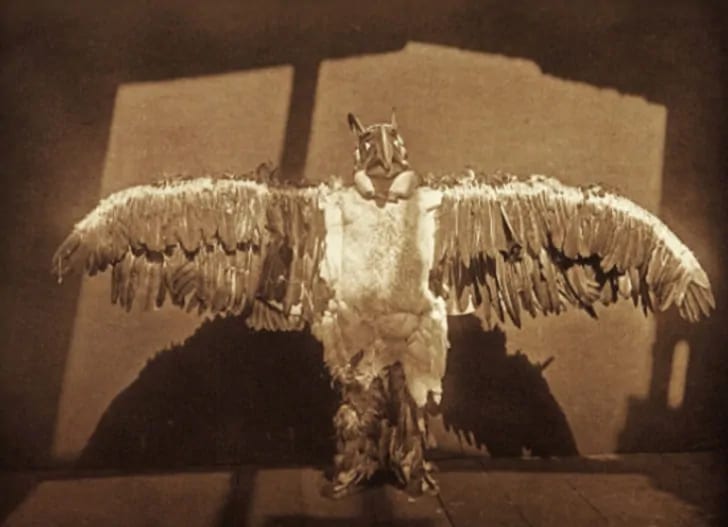
The indigenous tribes are not just restricted to the United States of America. In places like Canada, you can come across a wide variety of native tribes. For instance, there is the famous tribe of the Kwagu'l nation. They have settled along the northeastern shoreline of Vancouver Island. Their main occupation includes fishing and hunting, which is because of where they reside. In this picture is British Columbia's Kwagu'l nation's dancer wearing a costume to look like a Thunderbird. According to various beliefs, Thunderbird had the power to create thunder by the mere flap of its wings, and it also has a tremendous symbolic significance.
Magnificent Lake
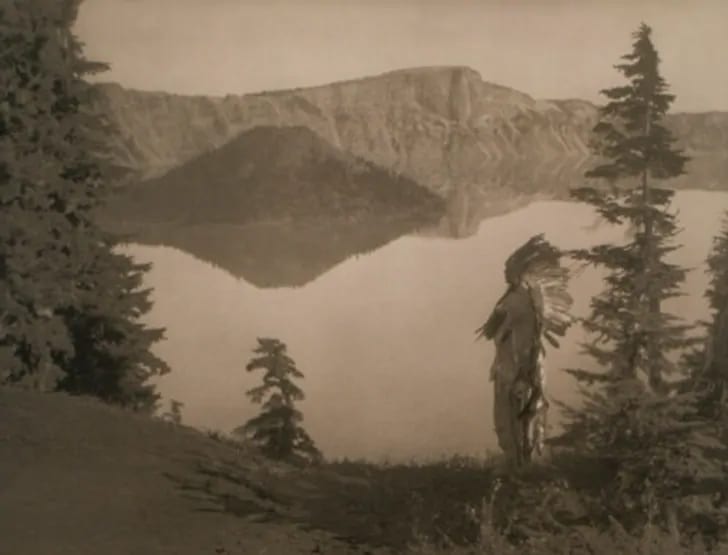
One thing is clear from these pictures of indigenous people; they were very close to nature. And this is why they appear so content with their lives. Additionally, notice all the sceneries prevalent in these pictures. They are magnificent. Here in the photo is the chief of the Klamath tribe looking at the glorious Crater Lake. This lake came into existence after a volcanic eruption destroyed a tall peak almost seven thousand years ago and gave way to this lake. In America, it is one of the deepest lakes with a depth of 1,148 ft. It looks so peaceful and serene in the picture.
The Great Warriors
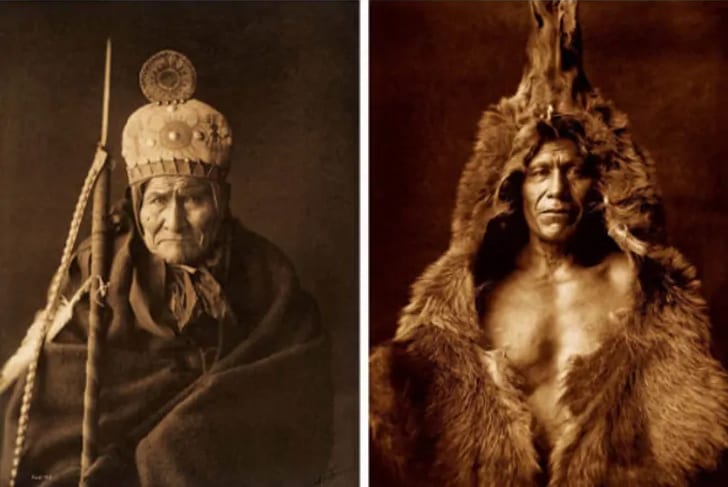
The indigenous tribes had influential leaders who took care of all the crucial decisions. Just by looking at them, you can tell that these leaders had the upper hand in decision-making. In the left picture is the famous Apache leader Geronimo who was 74-years -old when this photograph was taken. On the other hand, the person in the right photograph is Bear’s Belly. Does this name sound strange to you? Well, he was a great warrior who took on three bears in a battle. Geronimo was also famous for killing three bears on his own. No one would even think about messing with them.
